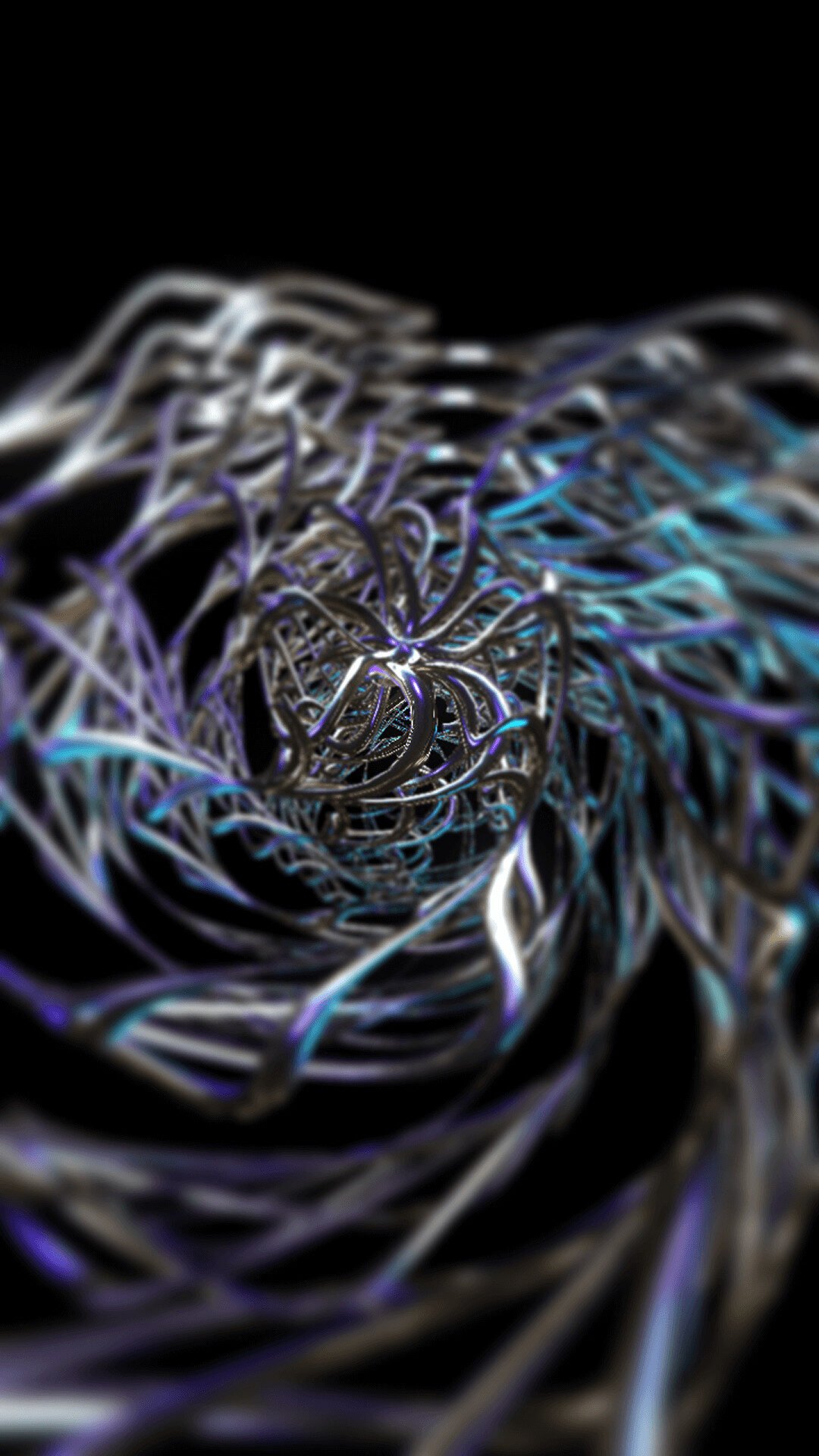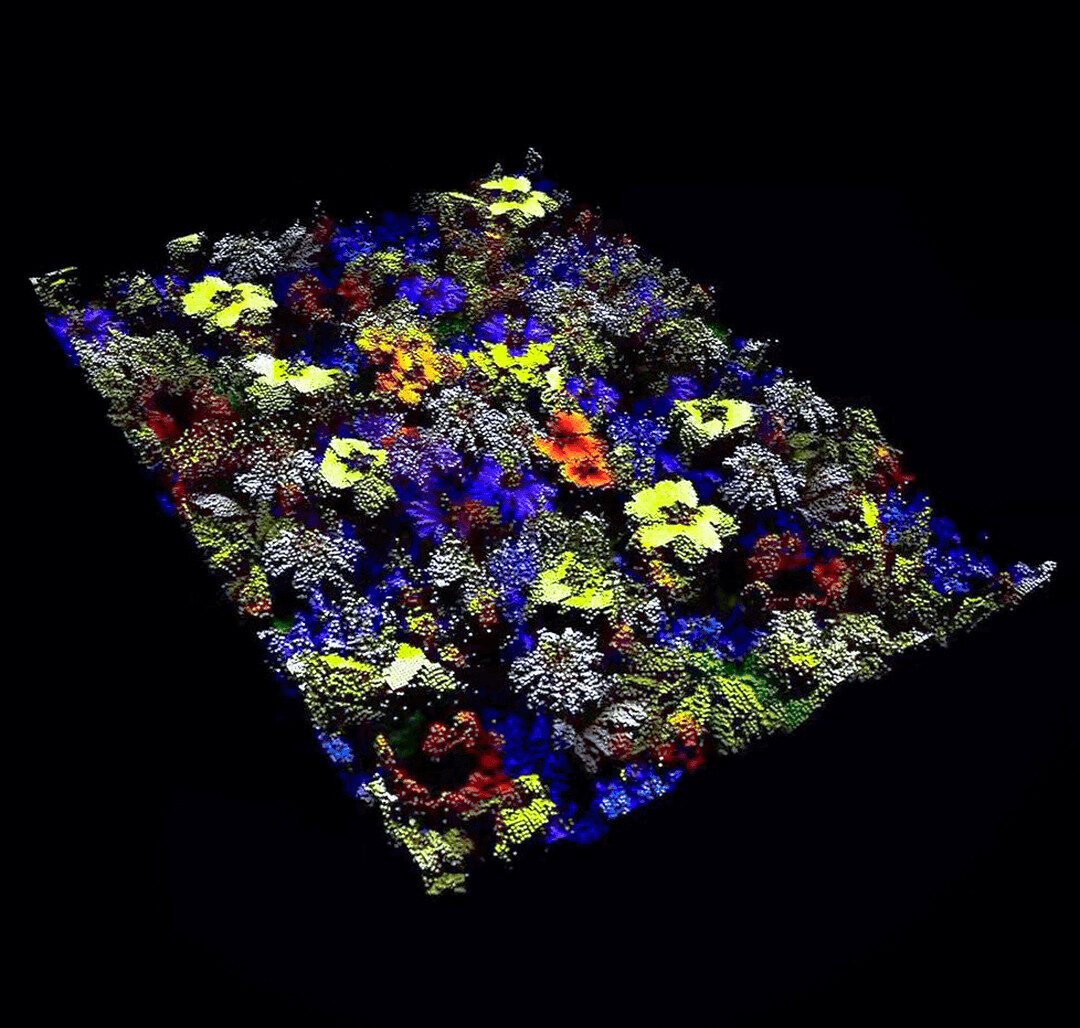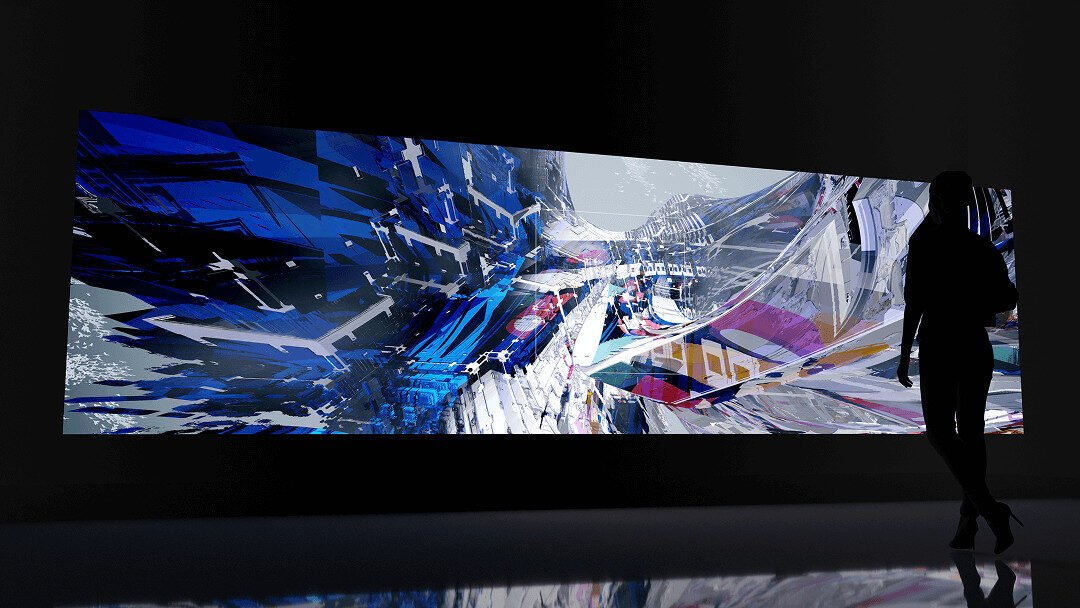Curiosity is my main driving force. I enjoy challenging myself and approaching creative ideas from two angles: the imaginative side, where I reinterpret the world I observe, and the logical side, where I try to understand how to simulate that world.
ARTIST BIO
He creates visual universes with TouchDesigner and explores visuals inspired by retro-futurism, Y2K, and cyber-organic design. His work blends real-time systems, music, and generative art into experiences or digital poems. He also teaches and shares this creative process with a growing global community of artists, musicians, and technologists.
- Web: okamirufu.link/skool
- Instagram: @okamirufu.vizualizer
- TikTok: @okamirufu.vizualizer
- Youtube: https://www.youtube.com/@OkamirufuV
- Patreon: Okamirufu
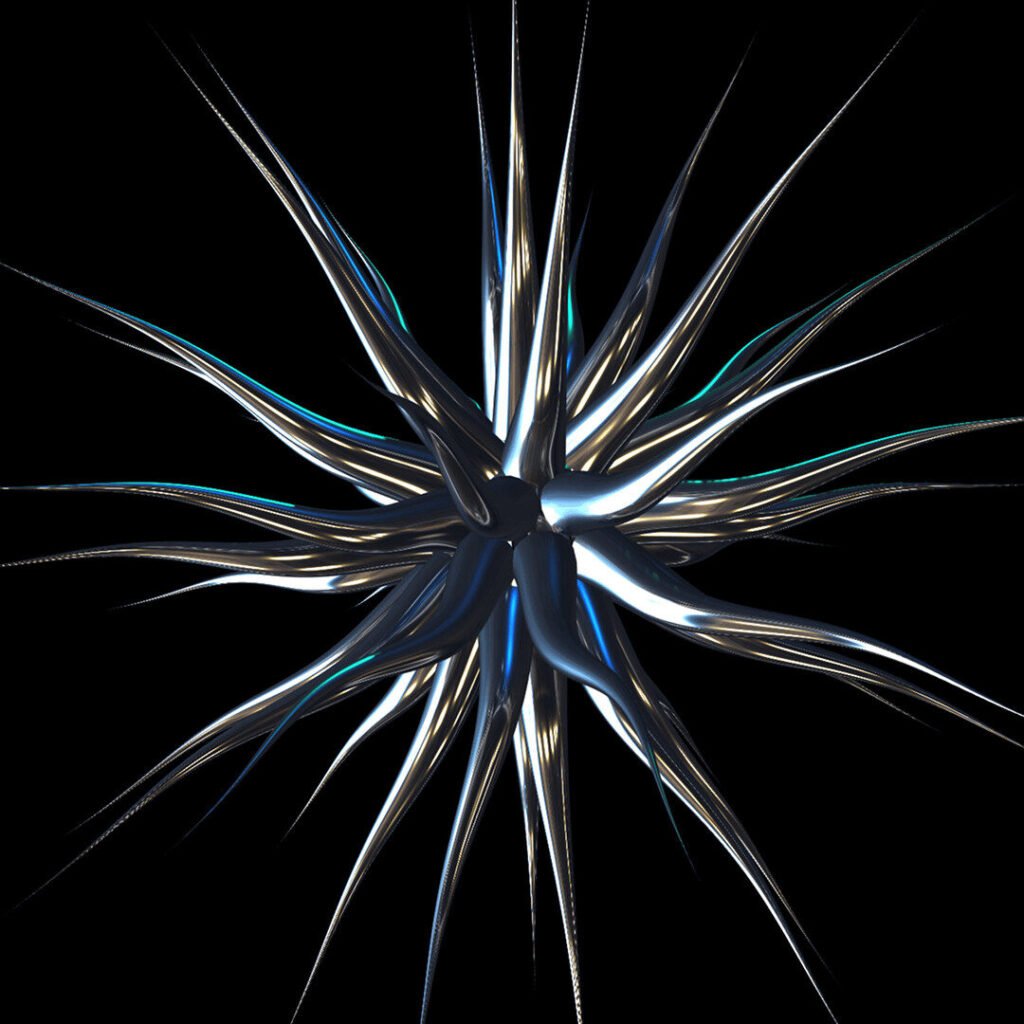
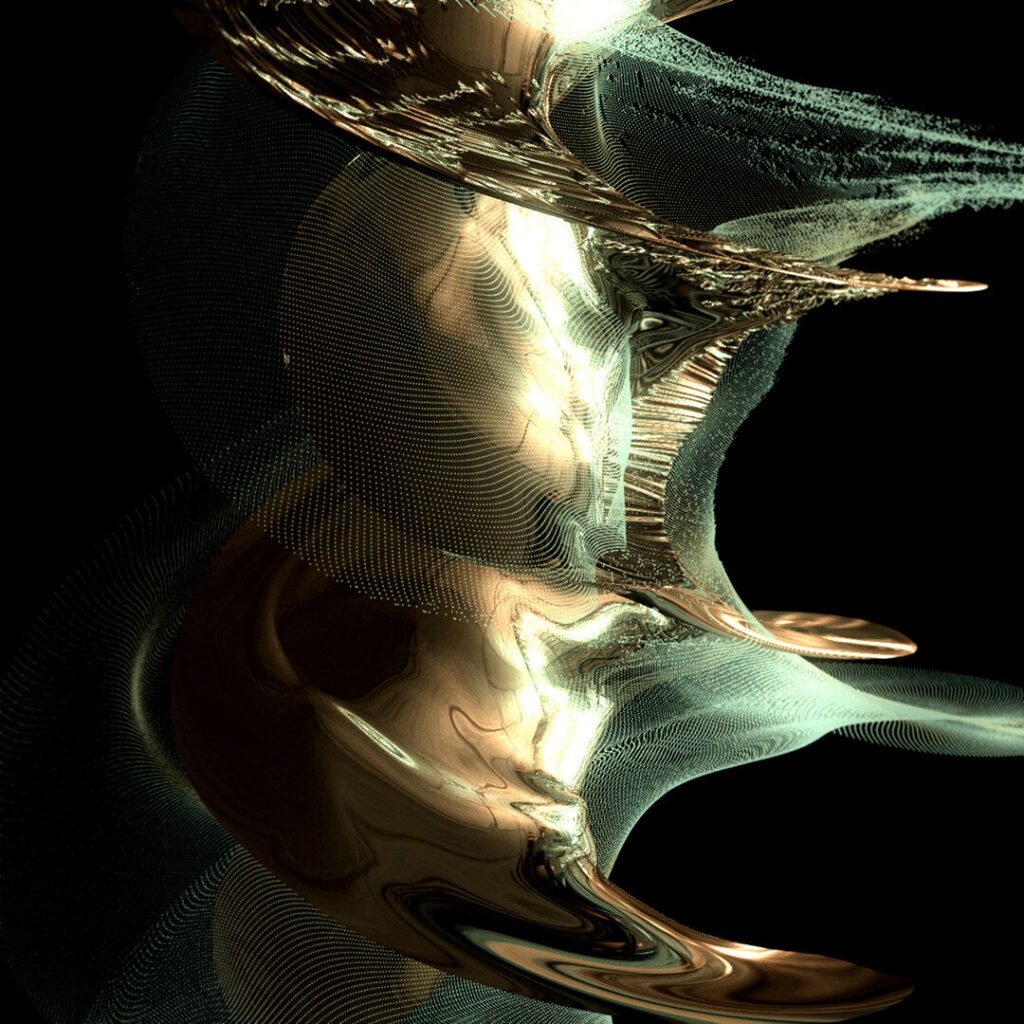
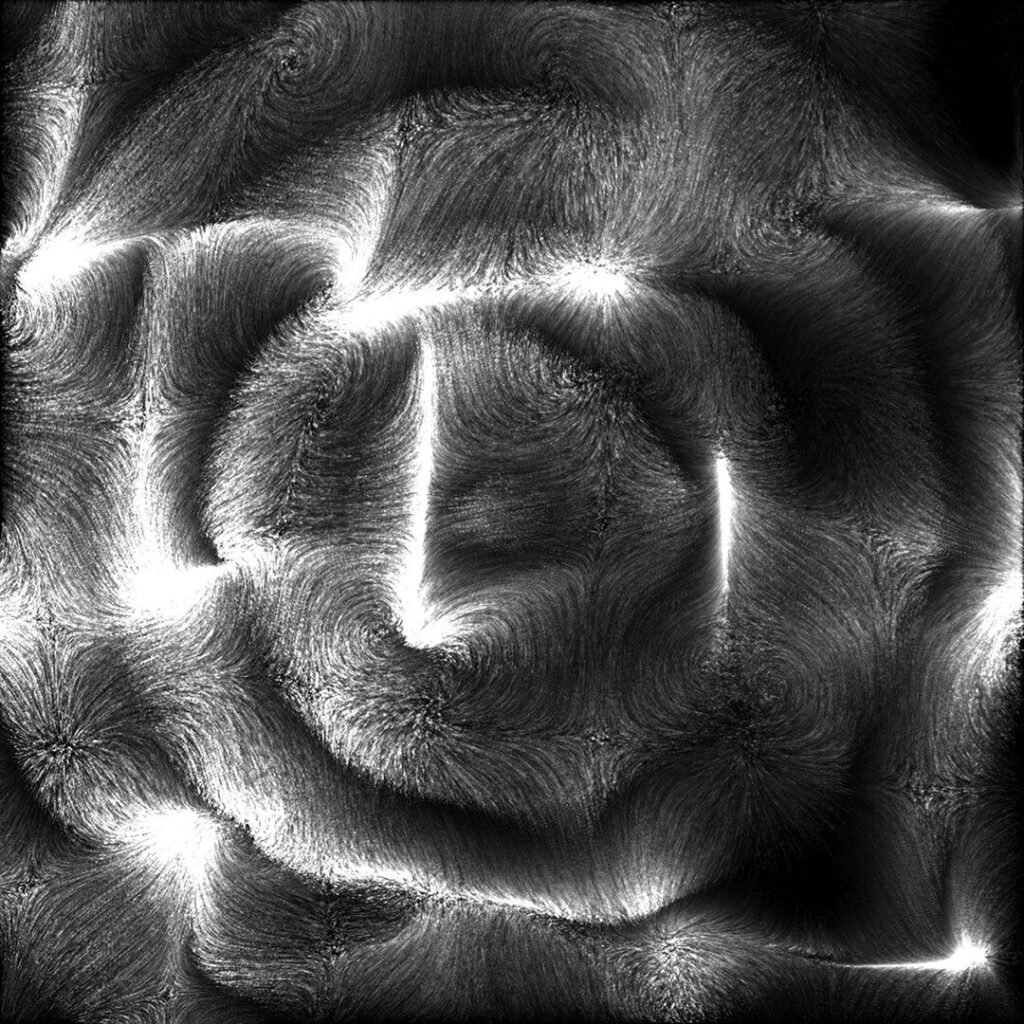
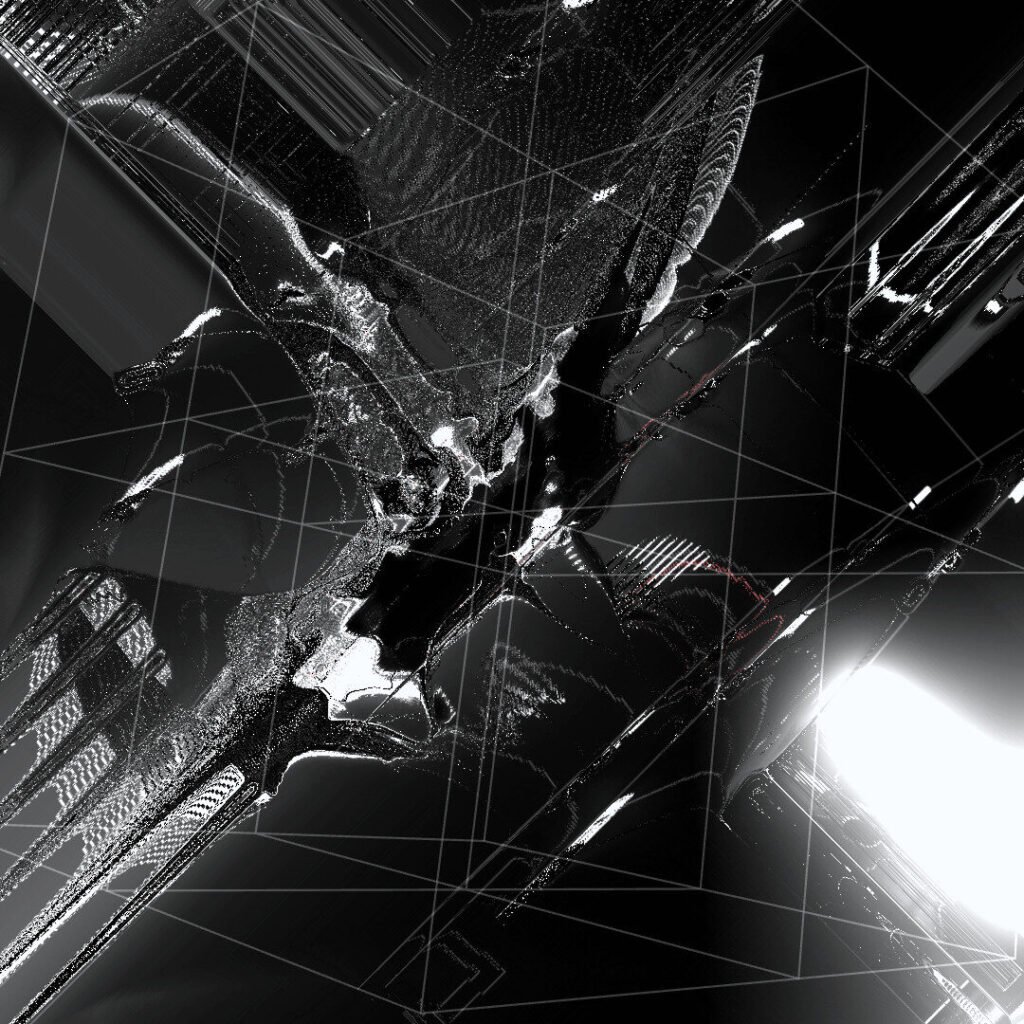
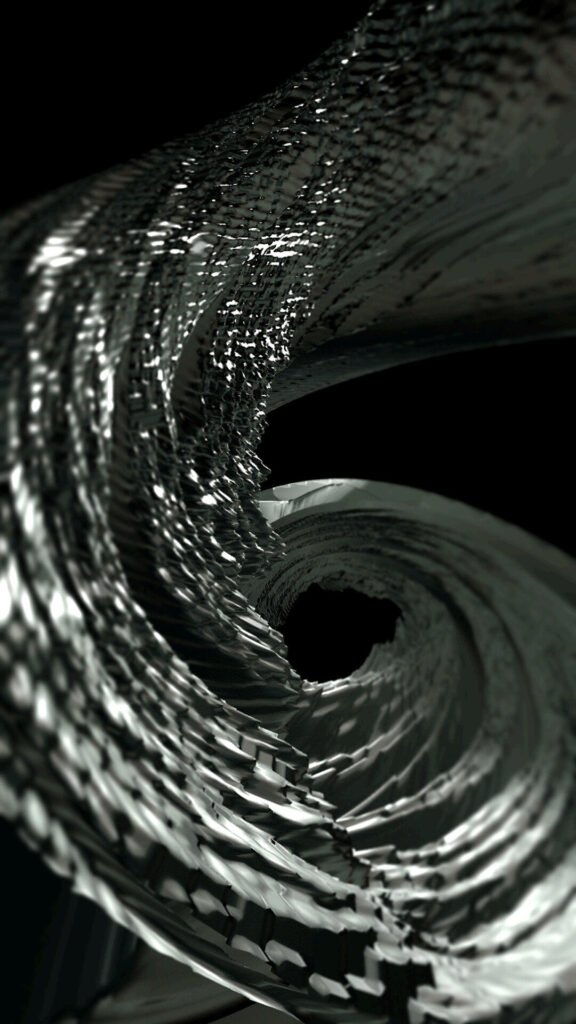
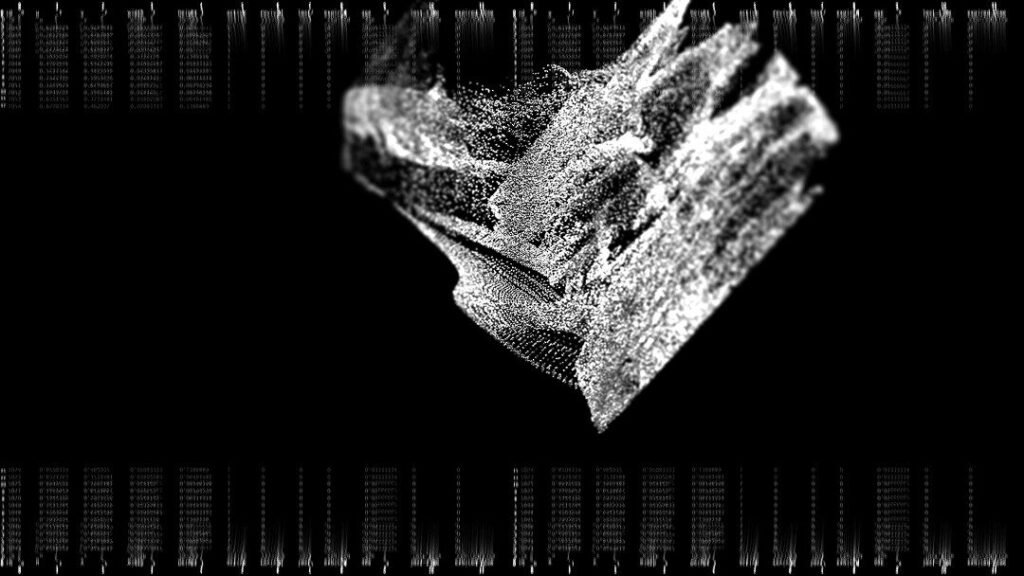
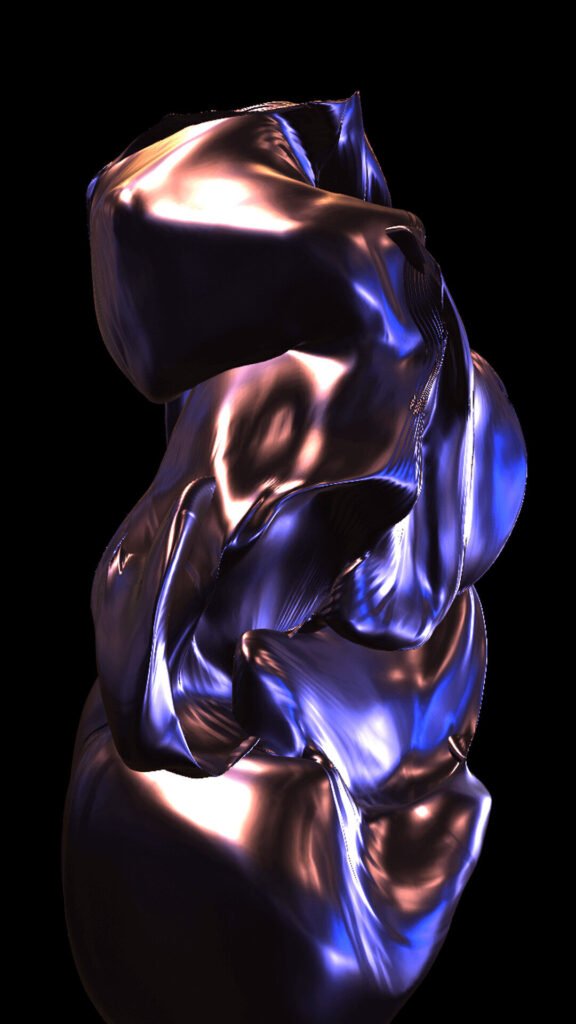
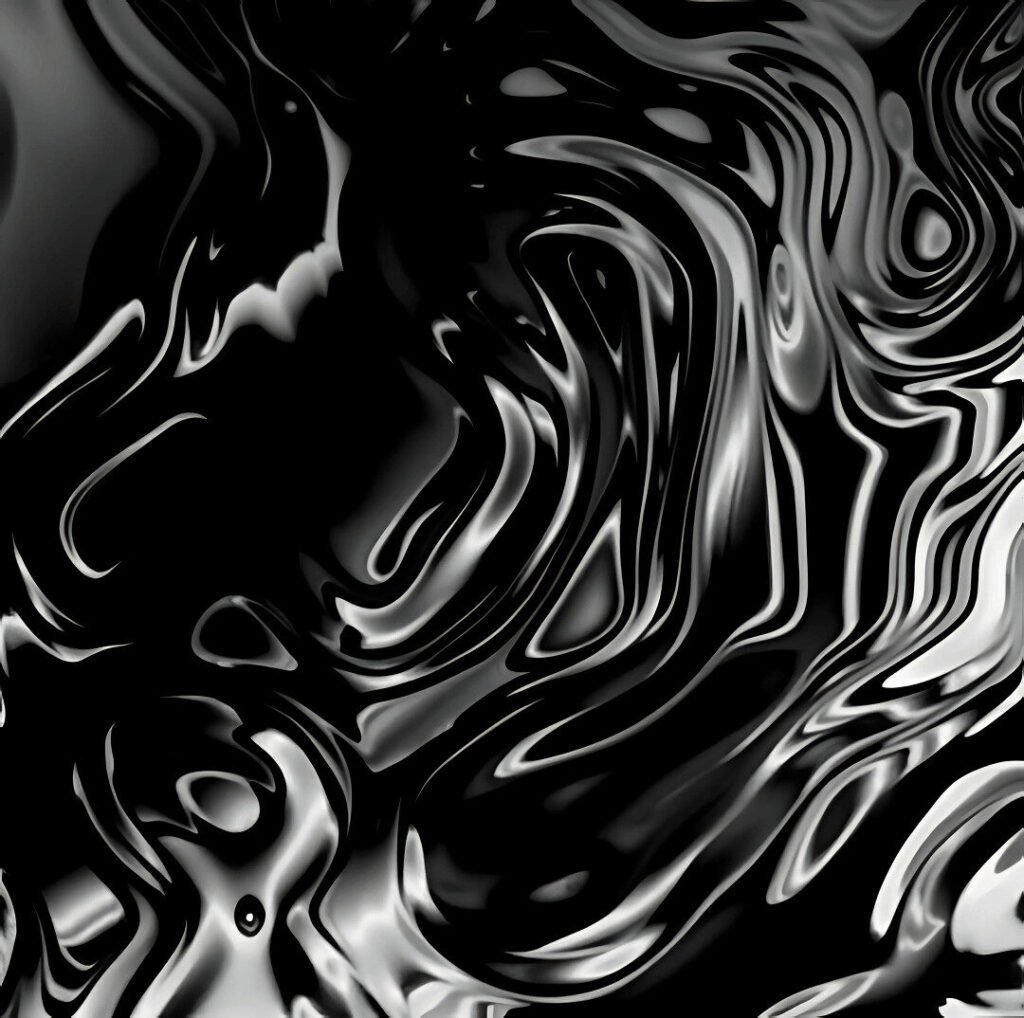
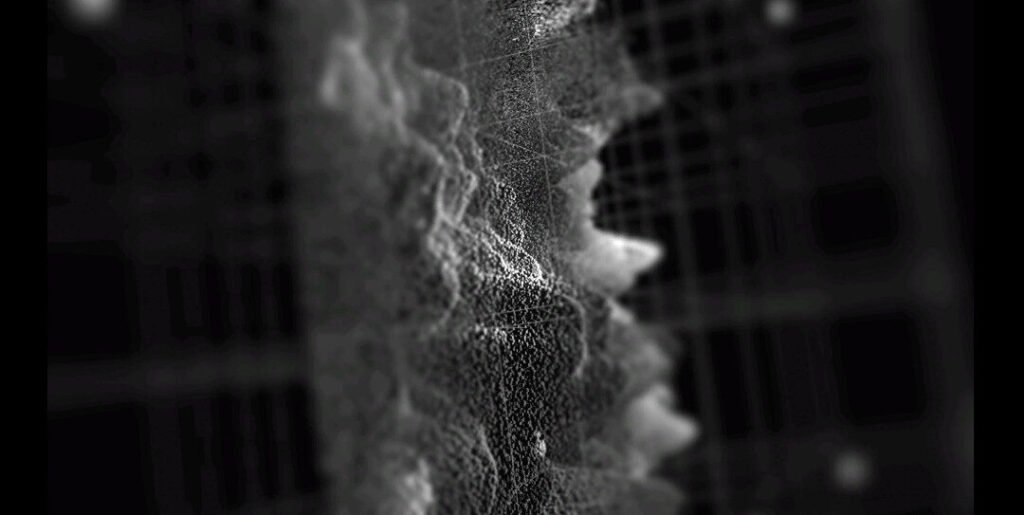
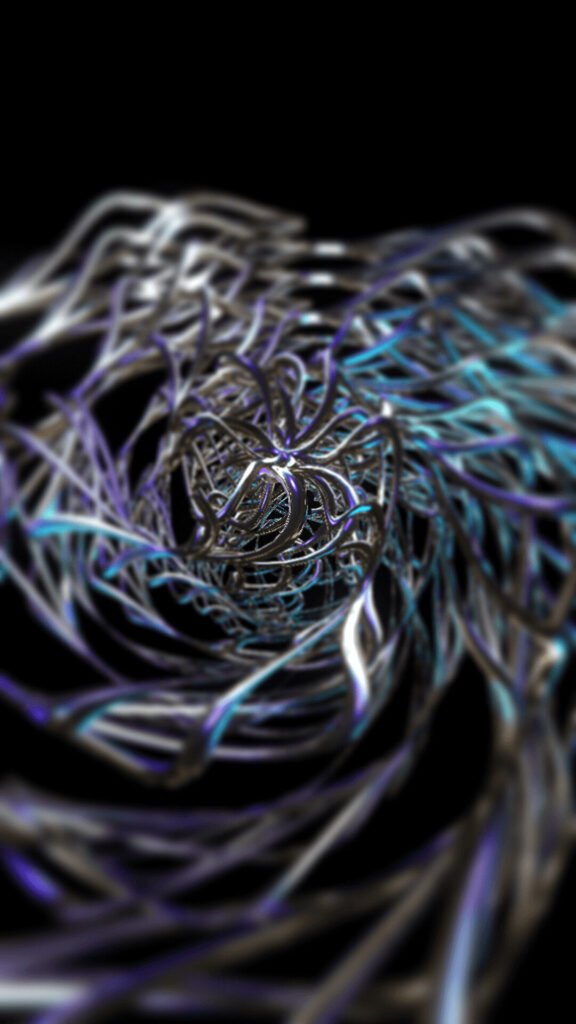
What Is one belief, insight, or idea that guides your creative process?
Curiosity is my main driving force. I enjoy challenging myself and approaching creative ideas from two angles: the imaginative side, where I reinterpret the world I observe, and the logical side, where I try to understand how to simulate that world. I would also add a third element—my deep sensitivity to all forms of artistic expression, from music to digital and multimedia arts. Each of these realms helps me explore the limits of my creative potential. And perhaps most importantly, my process is guided by a constant obsession to keep creating, observing, and staying present in the act of making.
Can you tell us how you discovered Mixed art and what drew you into it?
This happened many years ago, and it was a very intuitive moment. I was playing around in Adobe Illustrator, and at some point I drew a line and distorted it using noise. Then I wondered, what if I duplicate this line hundreds of times? That was the first time I realized I could create art based on a set of rules—where the outcome was unpredictable. And that unpredictability fascinated me. From that moment, I started researching and came across the term generative art. I felt relief knowing that this kind of work could be considered art, and that what I had discovered in Illustrator was just the tip of the iceberg.
What obsessed me was the mix: while my personality is more on the creative and intuitive side, solving things through logic, programming, and structured thinking became a personal challenge—almost like what chess players might feel during a match. That combination was the perfect realization: I wanted to go as deep as possible into this world. And honestly, I’ve only been able to seriously pursue it for about a year.
What do you think defines your style or creative approach, and how did you arrive at that identity?
The idea of “style” has many layers—it can refer to how I solve things logically or to the visual identity of my work. From a technical perspective, I always try to find the fastest, most efficient solution with the fewest nodes possible. It might not be the most elegant, but it’s the path that feels most natural to me.
Visually, my style is influenced by futuristic aesthetics, Y2K culture, retrofuturism, and industrial design. I’ve always been drawn to technology, and I like to imagine my artworks as elements that could exist within larger conversations, environments, or narratives about tech.
Although I don’t come from a formal design background, I’ve developed an intuitive sensitivity for visual identity—thinking about how my work connects to elements like logos, graphic systems, or even specific fonts. It’s not something I studied in a structured way, but these pieces naturally come together to shape the final result of what I create.
How does a project usually begin for you? Do you have a creative ritual or structure you follow?
I usually start by browsing my inspiration board—Pinterest, saved Instagram posts, or references from other artistic fields that aren’t necessarily related to TouchDesigner. My first question is always: how can I reinterpret this, simulate it, and build my own narrative from it?
That’s how I begin with a blank canvas. Honestly, most of the time, I don’t end up creating exactly what I imagined. But I accept that, and I focus on what did emerge—because within that process, I often find a new path to express something more personal.
In short, I begin by reinterpreting what I observe. I explore it through trial and error, and eventually, I discover something that feels like mine. I play with it, tweak elements here and there, and at some point, I feel excited by the process and the new learning. From there, I can create many variations and keep evolving the piece until I feel satisfied with what I’ve achieved.
What tools or technologies do you use most, and how do they influence your visual language?
TouchDesigner is my main software, and I only use Ableton Live occasionally when I want to do something more specific with sound. I try to stay as minimal as possible in my setup because I believe we’re only scratching the surface of what TouchDesigner can really do. It’s a tool with virtually infinite flexibility, and I hope that over time, more artists will push its creative boundaries and discover new forms of expression. Personally, I feel like we’ve only uncovered about 10% of what’s truly possible with this program.
Do you feel there Is a strong generative art scene? What would you like to see evolve in it
As I mentioned earlier, I’d love to see artists push their creative and intuitive processes further — and above all, I hope their curiosity isn’t interrupted by the fear of learning technical tools like programming or TouchDesigner. That kind of fear can feel overwhelming and might discourage many creative minds from even starting. What I’d most like to see evolve is the shared knowledge around this artistic universe, so it becomes more approachable — so anyone can explore it without frustration, even if they’re not a programmer or engineer.
That’s where my mission feels very clear: I try to teach as efficiently as I can. If I create a tutorial that anyone can follow and learn from, then I know I’m adding real value to the world of generative art and everything it inspires.
And to be honest, with every tutorial I make, I often end up learning more than anyone else — because I don’t always have the answer ready in my memory. That challenge pushes me to dig deeper and find solutions, and through that process, I always end up learning more than I expected.
What advice would you give to someone who wants to start creating generative art but doesn’t know where to begin?
Start by creating your own learning path. Ask any AI to give you a list of topics related to generative art. For example, it could include things like particle systems, attractors, noise, feedback loops, cellular automata, reaction-diffusion, or L-systems.
Once you have that list, ask the AI to organize the topics from the most basic to the most complex. Then, go to YouTube and start learning the first concept using all the tutorials you can find.
After each topic, give yourself space to explore — don’t worry about mastering any one technique. What matters more is understanding each concept well enough to begin shaping your own visual language. That’s where your art starts to take form.
Which artists or creators do you think are doing remarkable work and deserve much more recognition?
I believe many of these artists already receive well-deserved recognition, at least on social media — so it’s quite subjective to say who needs more. That said, I’m happy to mention a few whose work I admire deeply and who continue to inspire me creatively. Some of them are:
